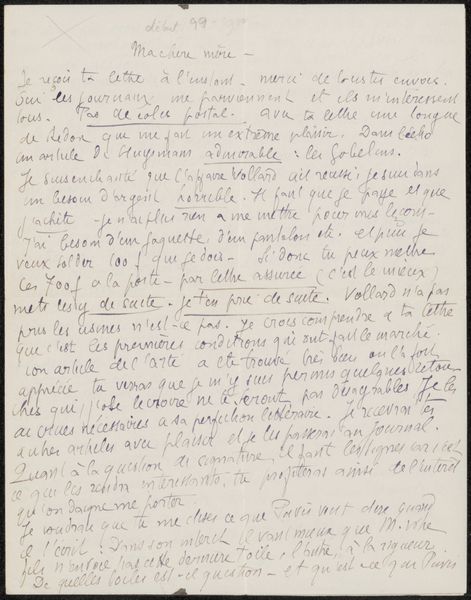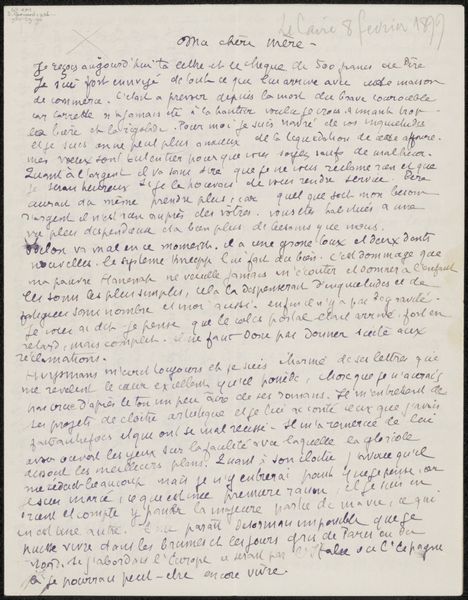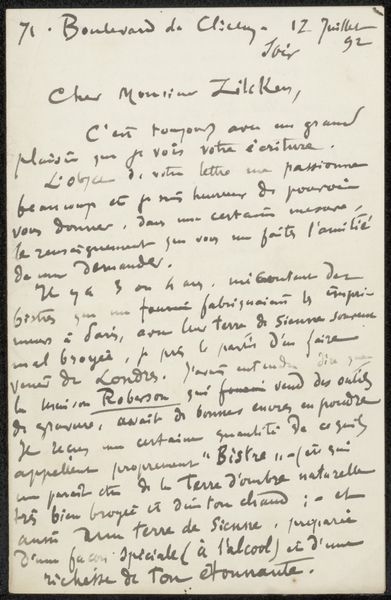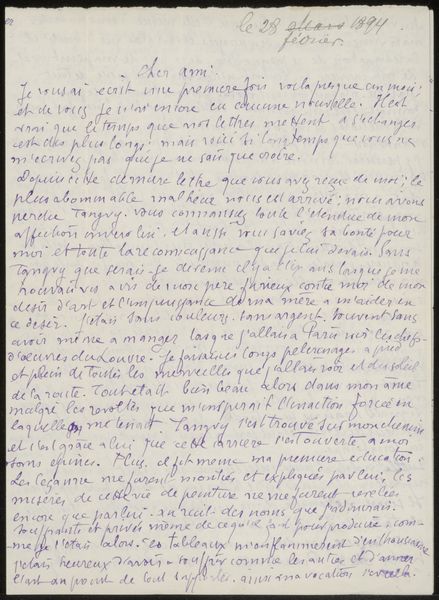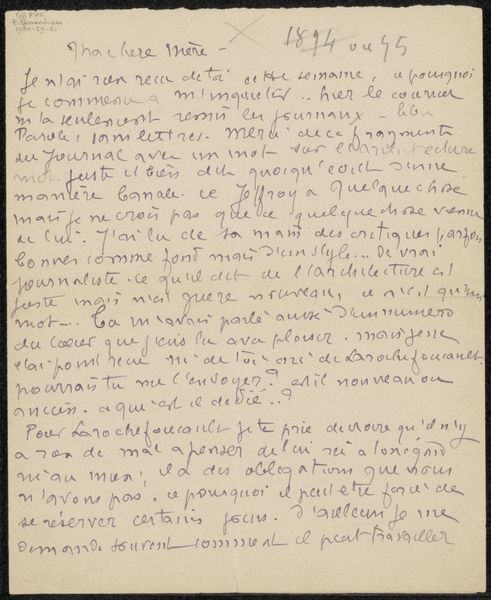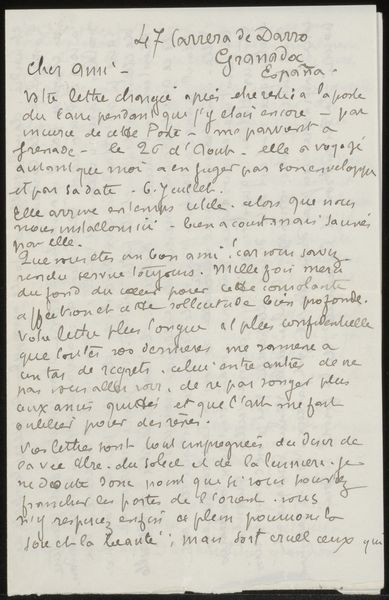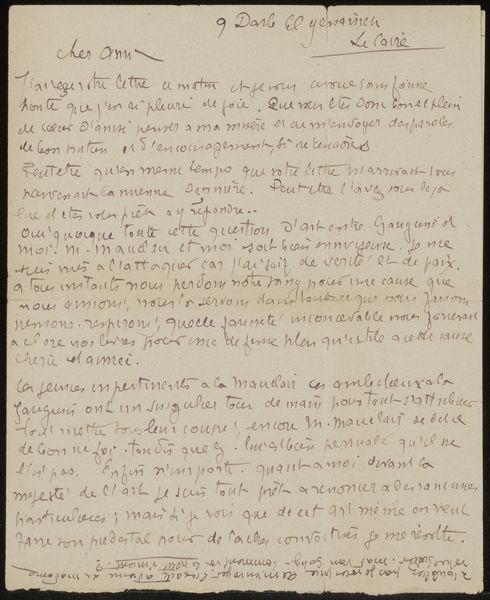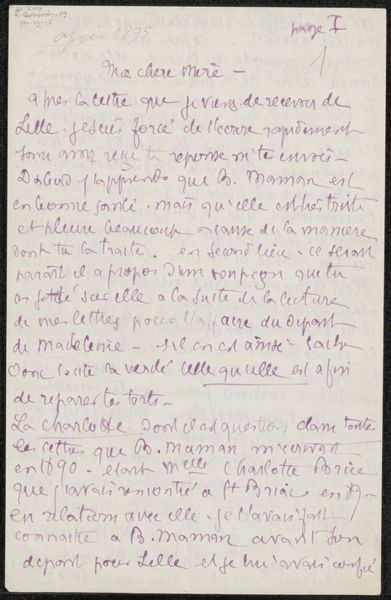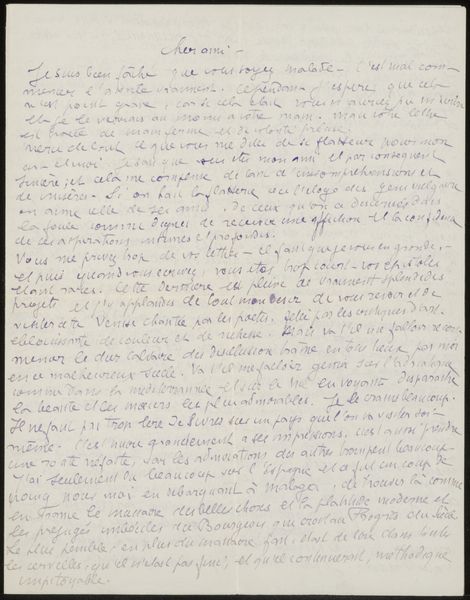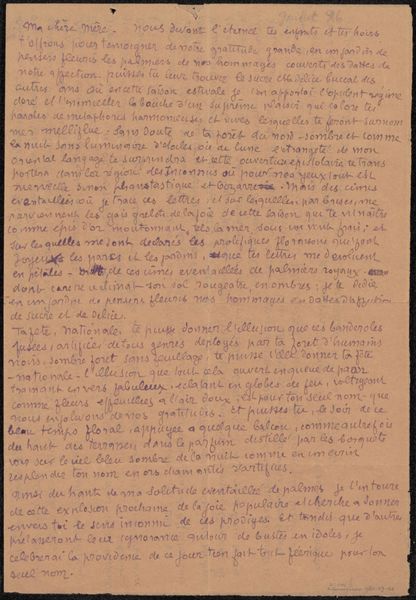
drawing, paper, ink, pen
#
drawing
#
hand-lettering
#
narrative-art
#
hand drawn type
#
hand lettering
#
paper
#
personal sketchbook
#
ink
#
hand-drawn typeface
#
ink drawing experimentation
#
intimism
#
pen-ink sketch
#
pen work
#
sketchbook drawing
#
pen
#
post-impressionism
#
sketchbook art
Copyright: Rijks Museum: Open Domain
This is a letter written by Emile Bernard in 1896, using pen and ink on paper. Though it may not strike you as an artwork, I would ask you to consider the labor involved in its creation. Think about the social context of letter writing at the time. Before mass communication, handwriting was a crucial skill, taught to most children, but practiced with exceptional care by some. Penmanship was a mark of character. Bernard carefully forms each letter and uses violet ink, imbuing the missive with a sense of care and importance. Bernard’s handwriting, the rhythm of his cursive, the visual weight of the ink on paper — all of these material qualities contribute to the letter’s meaning. He seems to have been conscious of the recipient, Héloïse Bernard-Bodin, and the lasting impression the document would create, carefully using his handwriting as a visual and emotional medium. By considering the materials, the making, and the context, we can better understand the full meaning of this seemingly simple artwork, challenging traditional distinctions between fine art and craft.
Comments
No comments
Be the first to comment and join the conversation on the ultimate creative platform.
